YANGON— For two decades Mai Khun Shwe has been running a traditional textile shop at one of Yangon’s most popular tourist hotspots. Her shop, Yo Ya May, specializes in high quality, hand-woven traditional ethnic Chin textiles from western Myanmar.
The textiles are handwoven by village women from impoverished and remote villages in southern Chin State and in neighboring northern Rakhine State.
Sitting in her shop on the first floor of the bustling Bogyoke Market in downtown Yangon, the 59-year-old—herself of Chin ethnicity—said she and her husband initially founded the business in order to earn a living and support her family, but later was motivated to continue as a means of supporting Chin women, which she continues to do today with pride.
Founded in 2003, Yo Ya May began selling textiles created by three elderly Chin women residing in a village in northern Rakhine’s Kyauktaw Township. Mai Khun Shwe said it helps to design items to a wider market appeal and over time the product range has expanded to include contemporary Chin textiles too. She supplies the cotton to be used in weaving the textiles. Then she buys the finished products from weavers and distributes them in the market.
The number of weavers creating products for her shop has multiplied over the years. In 2013, Yo Ya May expanded its operations, taking a brave step into the international market by exporting to the United State, allowing Mai Khun Shwe to employ around 200 weavers—almost all Chin women in rural villages.
Most of the weaving is done by elderly women and those who were married at a young age and had many children. It was an opportunity for them to work at home, Mai Khun Shwe said.
Weavers find two or three hours a day to weave. Some of them weave while babysitting or after cooking. Some have free time to weave in the evening. During the harvest season, they go out to the farms to cut and gather the crops and take their back-strap looms in the farm basket so they can weave under the shade of a tree during their rest time at the hottest part of the day.
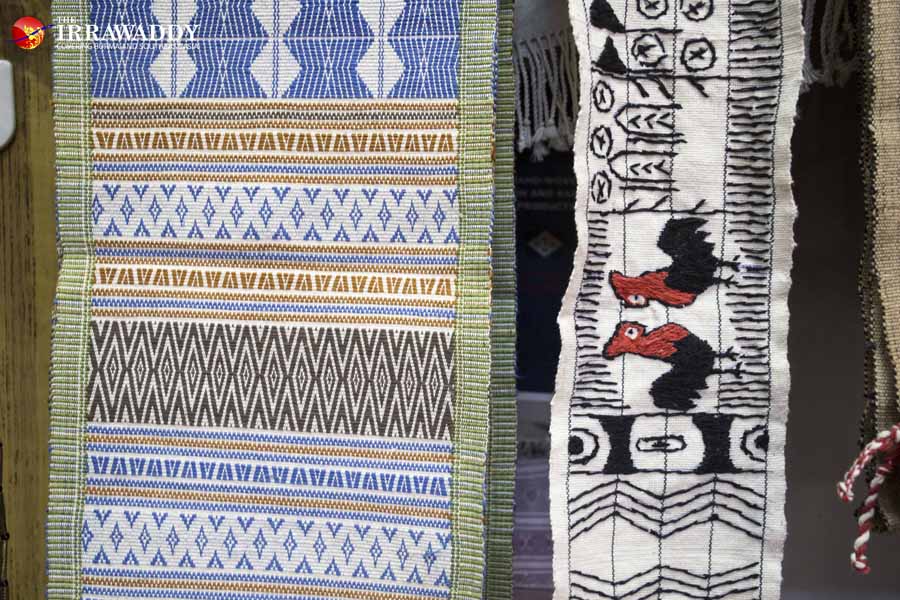
Each woman can finish between four and six products per month, earning them 60,000 to 90, 000 kyats. The additional income they earn from weaving helps support the family’s livelihood and their children’s schooling needs.
These days, the women can sometimes even become the main breadwinners for their families, Mai Khun Shwe said.
In this past 20 years, some of her weavers’ children have even been able to graduate from university. Some become teachers and others become weavers themselves, she said.
Over time, as Mai Khun Shwe witnessed the weavers’ lives improve, and she feels proud of her work.
“Every day, I am very pleased to sell back-strap woven textiles made by Chin women as I can improve their income with my work.”
Ko Thar Gyi, a group coordinator from Rakhine State, started working with her when he was a teenager.
“Nu (meaning ‘mother’ in Chin language) is always very patient with us. She takes all [woven textiles], good or bad, for many years, providing jobs to all of us,” the now-41-year-old said.
Mai Khun Shwe, who is often affectionately nicknamed Nu by her weavers, takes every piece of handwoven textiles sent to her.
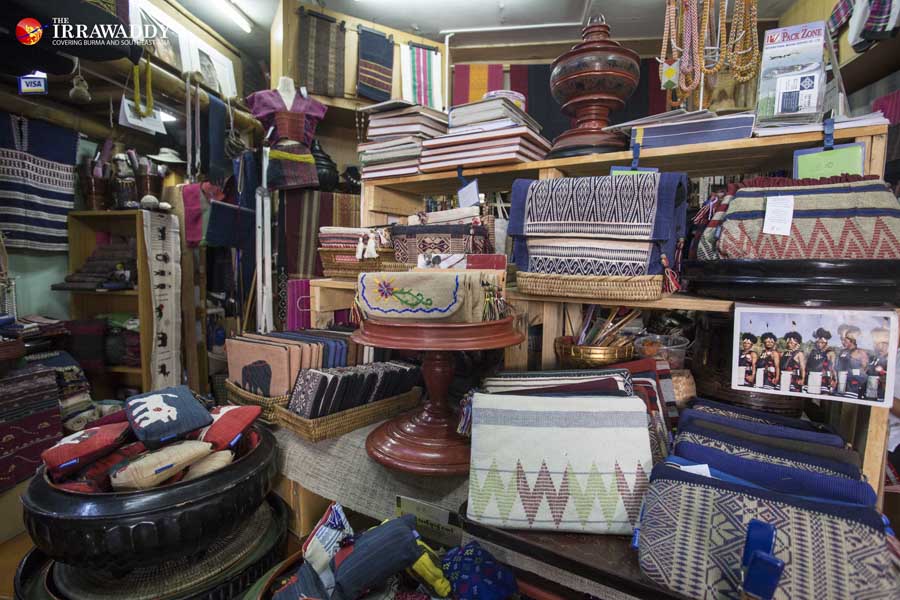
Having been born and raised in the hills of Chin State—one of the least developed parts of the country— she knows how extremely time-consuming the process of weaving traditional Chin textiles is and how they are distinguishable by the exquisitely intricate patterns. It takes one to two weeks to produce a 30 to 40 centimeter hand-woven shawl. She knows how much the weavers and their families depend on the income from weaving.
With a strong sense of empathy, Mai Khun Shwe can’t say no even when she is sent work with stains or faults. Instead, she turns the good parts into card holders, bags or cushion covers which, it turns out, have become best-sellers at her shop.
Chin textiles have seen a surge in popularity among locals and foreigners in the past decade. Twenty years back, hers was the only shop selling them at Bogyoke Market, but now, more than 20 shops have jumped on the trend. The market has established itself as one of the best places in Yangon to buy traditional handicrafts and local products from Myanmar’s various ethnic groups.
Mai Khun Shwe said local women are inspired by the country’s defacto leader Daw Aung San Suu Kyi who often wears Chin outfits and ethnic handicrafts. Other buyers are interested in them because popular ethnic Chin actors and singers like to dress in the traditional patterns and styles. But her shop is most often crowded with foreign tourists.
Yo Ya May took its first step into the foreign market in 2013 when it began taking part in the International Folk Art Market held annually in Santa Fe in the United States. Following the exposure her Chin textiles received at the world’s biggest handicrafts market, the products are now in demand at 30 textile and souvenir shops in the U.S. and an interior design company in the U.K.
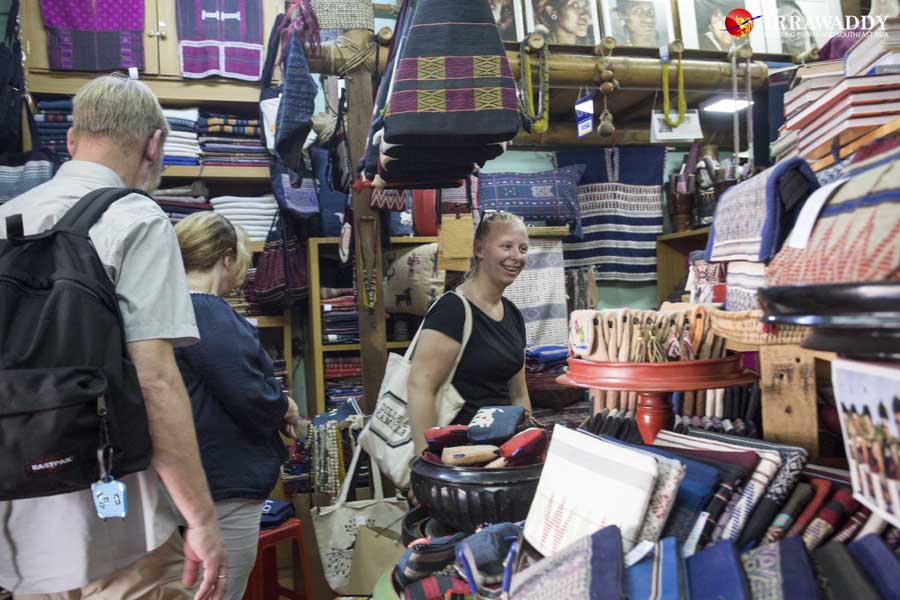
This month in France, Yo Ya May’s weavers’ products will be showcased for the first time in the European market at an international exhibition of crafts and textiles held from May 15 to 20.
Asking what her greatest wish is for now, she replied, “I want my weavers to be proud of their expertise. It is my greatest wish.”
“If our country competes in other sectors globally, I am not sure if it would win. But I am confident that the textiles handwoven by Chin women would be at the top in the world. They have an unbeatable artistic skill of color combination,” she said proudly.
According to David W. Fraser, co-author of “Mantles of Merit: Chin Textiles from Myanmar, India and Bangladesh,” the traditional textiles of the Chin are remarkable for their variety, quality and importance to their traditional culture as emblems of status.
The patterns on Chin textiles differ greatly from one piece to the next, but all are characterized by a highly evolved aesthetic sensibility and executed with a rare virtuosity. As Khosrow Sobhe of the Textile Museum Associates of Southern California put it, the patterns vary “from minimalist statements evocative of a Mark Rothko painting to exquisitely intricate supplementary yarn patterning, in some cases using weaving structures mastered exceptionally by the Chin.”
But Mai Khun Shwe said these artisans are often marginalized in their own communities.
Locally in the Chin villages, recognition for the skilled craftswomen is weak and many see weaving as just another household chore. The weavers feel that their community would have more pride in them if they were garment factory workers in Yangon or doing work in neighboring countries like Thailand, she said.
“We have these skilled weavers across the state. The state government needs to promote Chin State as the state of great weaving artisans,” she said.
But without significant support from the state government, she remains committed to elevating the weavers as much as she can.
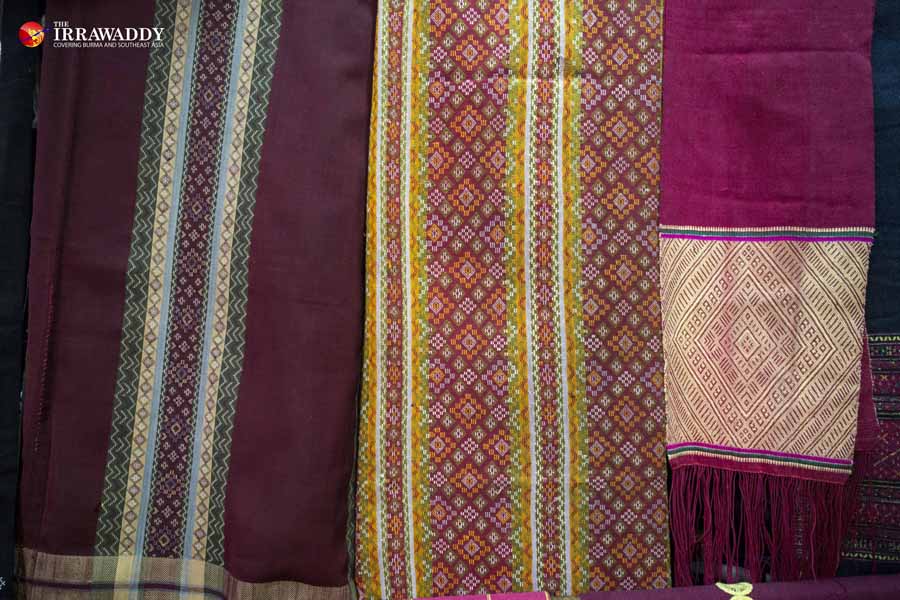
Mai Khun Shwe has bought some plots of land in Rakhine and Chin states, where most of her weavers are based, with an aim of opening centers where the weavers will be able to work comfortably at any time with their specific choice of loom and seating. This is an attempt to give the weavers more self-esteem. However, with intensified fighting between the Myanmar military and the Arakan Army (AA) in northern Rakhine and at the Chin State border, her plan has yet to be implemented.
“Their region’s instability [affects] their mood while weaving. The woven textiles made during peaceful times are more neat and tidy in detail, and have creative patterns, but during times of conflict, their choice of color and concentration on patterns are totally different.”
Having worked with the weavers for 20 years, Mai Khun Shwe has gained an insight into their moods while they are weaving. From their products she can tell whether her weavers are happy or unhappy, sick or in good health.
Running a business which employs hundreds of weavers hasn’t always been smooth—particularly when sales decline and the market weakens.
A new obstacle her business has faced in the last two years is a number of non-government organization (NGO)-funded projects coming in. Outsiders pay up to 12 professional weavers a much higher price than the market price for the products.
Under a funded project in 2017, a group supplied Chin weavers with low quality Chinese cotton and distributed the woven textiles in Bogyoke Market at a much lower price than Yo Ya May which uses natural dyed textiles and pure cotton. Mai Khun Shwe, who takes every piece made by her 200 weavers, can’t compete with the price as she depends on the market to continue providing employment.
She said the non-government organizations should provide techniques for quality-control and support new weavers instead.
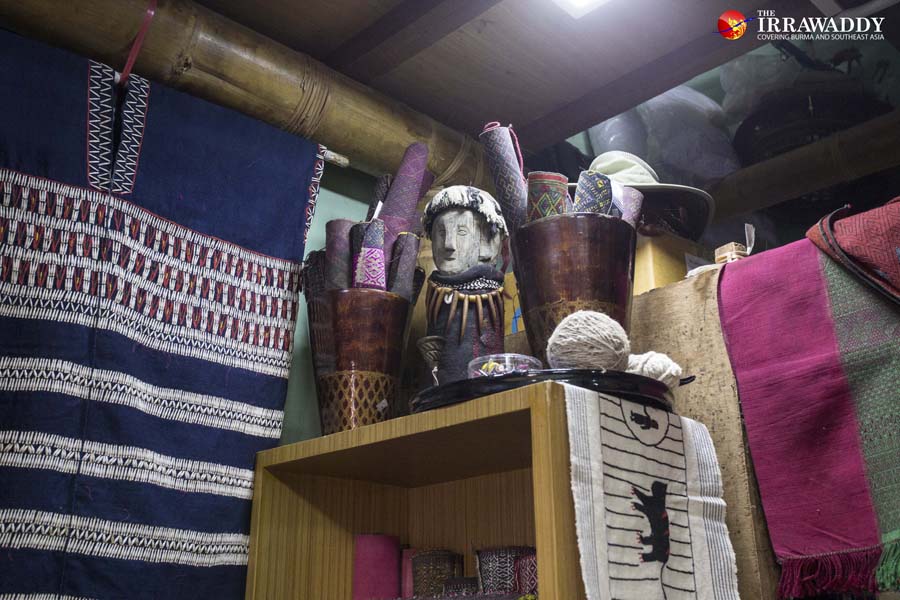
Having committed twenty years of her life to the textile industry, the 59-year-old said she will reduce her workload over the next few years and gradually hand over the business to some of her seven children. One of her daughters is already leading a branch of production in Chin State. She intends to spend more time at her farm in Hmawbi Township outside Yangon where she grows vegetables for natural dyes to be used in the weaving process.
She plans to give training in the art of dying textiles with natural dyes for those who are interested in expanding the local ethnic textile industry into the foreign market.
Besides her natural dye plantation, the farm may also become a weaving studio for her weavers and a cultural house dedicated to promoting Chin culture by exhibiting vintage and contemporary Chin textiles which she has collected.
Mai Khun Shwe also has a dream to hold a weaving festival by 2021. She wants it to be Myanmar’s largest ever celebration of the art of textile weaving and will invite local weavers from across the country, weaving experts and foreign professors.
“It will be my life milestone event.”
At the festival, she hopes her weavers will be filled with pride for their work.
You may also like these stories:
Makers Market Focuses on Handmade Goods from Local Artisans
Chinese Security Forces Alarmed by Market Construction Near Border
A Foundation for Chin-Bamar Friendship












